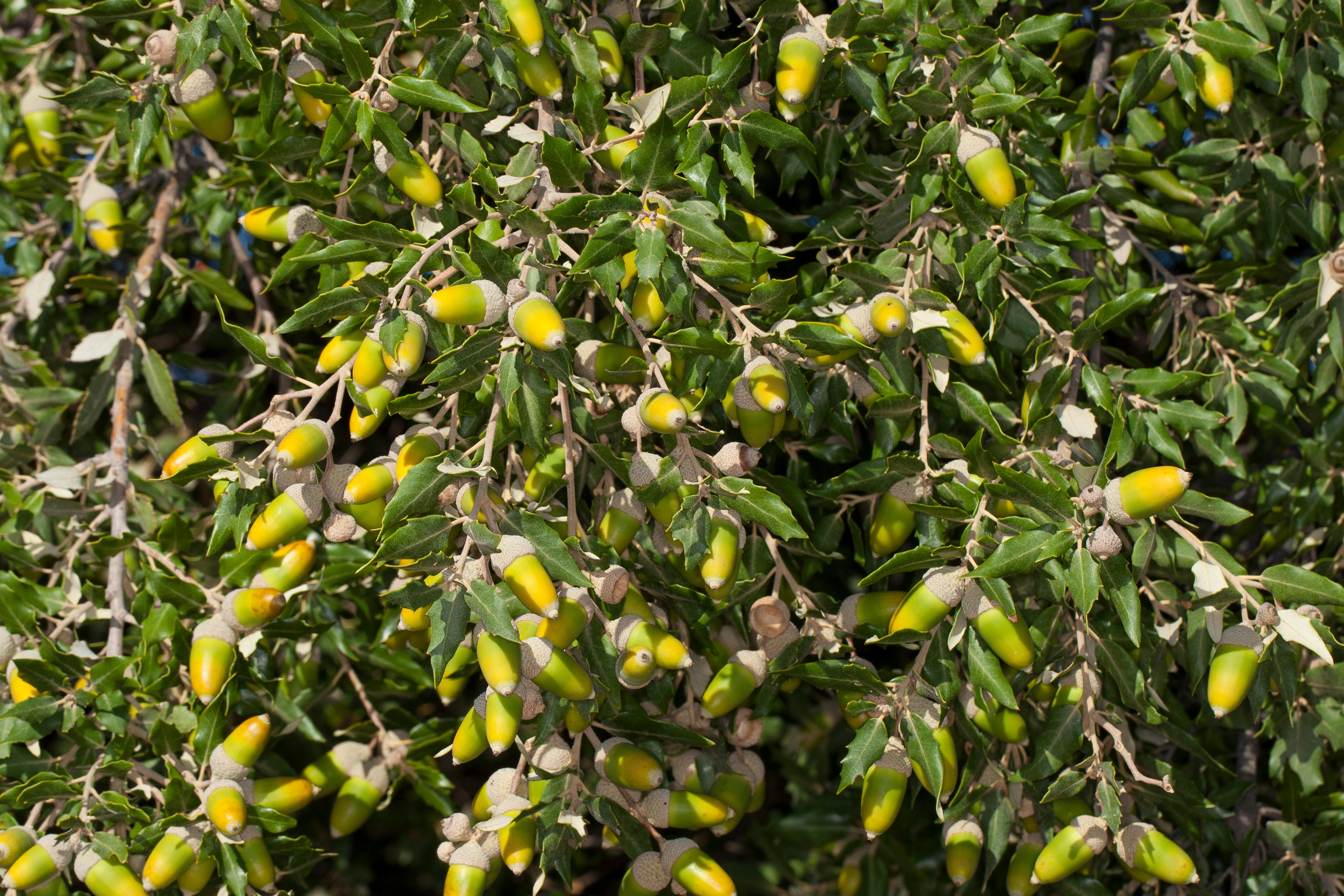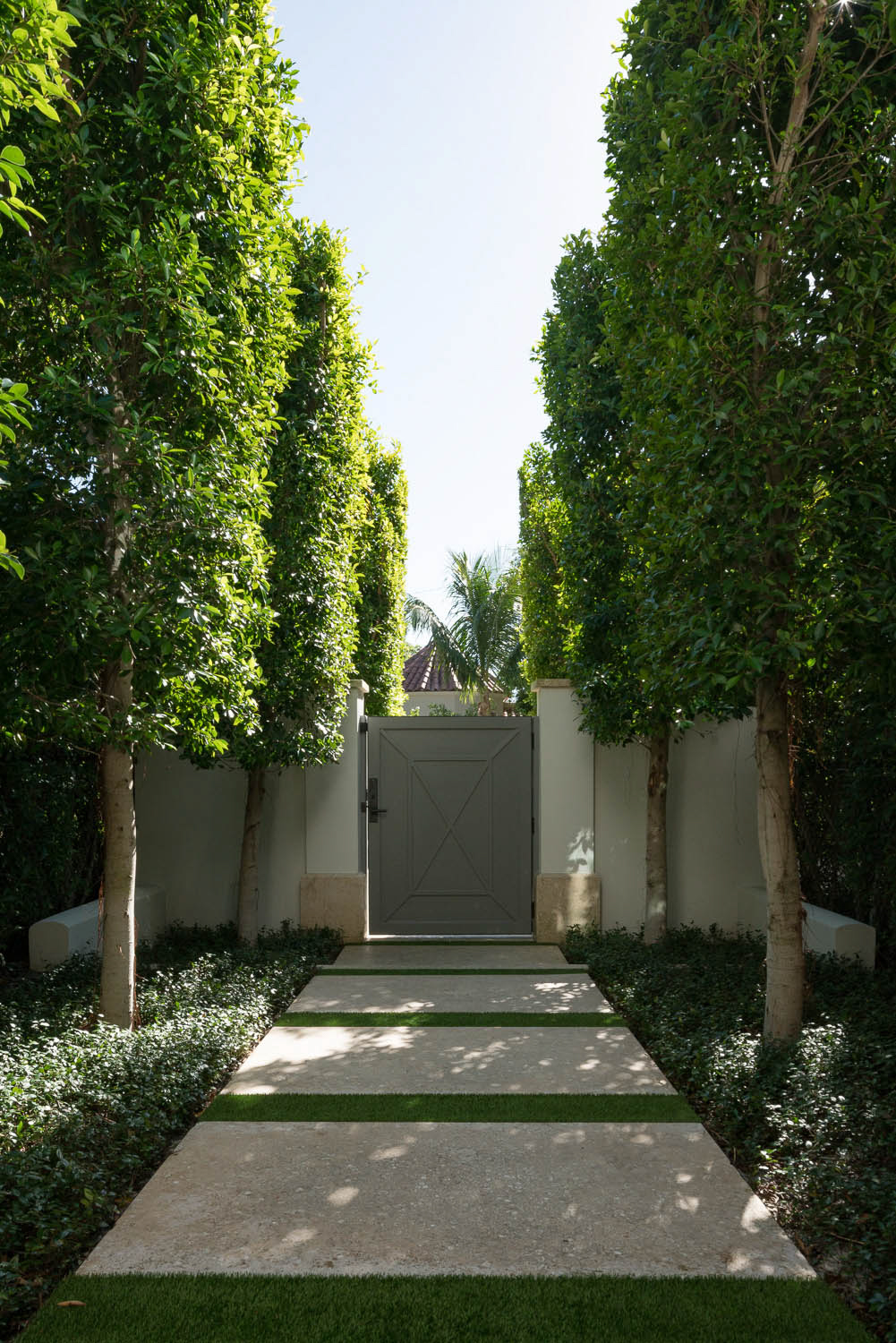
With warmer days on the horizon, it’s time to venture outside and make the most of your backyard once more. After such a long winter, your drab and dreary outdoor space is probably crying out for some TLC, which means a little landscaping is in order before you can enjoy it in all its glory. Of course, you might want to find some planting options that offer an extra layer of privacy in your backyard so you can sprawl out on the lawn in peace, and if so, we've found just the solution (as long as you're happy to practice a bit of patience).
Pleached trees, sometimes known as plashed trees, are pruned to form interlocking branches that grow horizontally to form a hedge-like effect atop the trunk. Besides being a statement landscaping idea, they're also one of the best options if you’re looking to add some added privacy to your backyard. With their height and dense foliage, they help to screen your space and make it feel more secluded so, if your fence or hedge just isn't enough to keep your quiet oasis away from potential prying eyes, turn to pleached trees for some added height.
However, before you begin learning the art of pleaching and get busy planting trees in the borders of your modern garden, you’ll need to know which species make the best pleached trees. To find out, we asked some arborists and landscaping experts which trees they recommend for the job. Below are five suggestions guaranteed to elevate your backyard and screen your outdoor space.
1. Hornbeam (Carpinus betulus)

For anyone looking for an especially dense canopy around their property’s perimeter, the hornbeam is one of the best trees for privacy when pleached. ‘Its dense foliage and ability to withstand heavy pruning make it ideal for creating a high, leafy screen that provides substantial privacy,’ explains Bob Berriz, professional landscaper and owner of Berriz Designs.
‘Hornbeam is relatively easy to maintain once established, requiring only annual pruning to keep its structured form,' he adds. 'Its resilience to pollution and ability to thrive in most soil types add to its appeal for urban and suburban gardens.‘
Chandler Moncada of CG Landscaping agrees that the deciduous hornbeam is an ideal candidate for pleaching. ‘When pleached, the Hornbeam forms a thick, uniform hedge-like screen that offers year-round privacy, especially during the growing season,’ he says.
2. Linden (Tilia)
According to Bob, another excellent pleached tree option is the Linden tree, particularly the Tilia cordata variety. ‘Known for its large, heart-shaped leaves, the Linden tree offers a thick canopy when pleached, creating a solid green wall that's not only private but also attractive throughout the seasons,’ he explains. ‘It's a hardy species that responds well to the formative pruning needed for pleaching.'
Besides earning points in the privacy department, the fragrant cream-colored flowers of the Linden tree will make for a beautiful display of blooms in summer that invite plenty of pollinators to your backyard. What's more, it's also a decorative choice for an espalier tree, too, if you want the branches to creep along a wall or up a fence.
3. European Beech (Fagus sylvatica)

If you want to enjoy a beautiful display of color in the fall, the European beech makes a beautiful addition to any backyard. ‘It’s well-suited for pleaching due to its dense, dark green foliage and responsiveness to shaping,’ notes Chandler. ‘Pleached beech trees provide a lush, formal privacy screen with a consistent appearance throughout the growing season.’
Like the other trees on this list, the European Beech requires regular pruning to maintain its pleached form. ‘It prefers fertile, well-drained soil and benefits from mulching to retain moisture,’ Chandler adds.
4. Evergreen Holly (Ilex aquifolium)
For bright green foliage all year round and guaranteed privacy throughout the seasons, opt for an evergreen tree for pleaching. Bob says the evergreen holly, also known by its Latin name, Ilex, is well-suited for those seeking a year-round privacy screen. ‘Its glossy, dark green leaves and ability to thrive in both full sun and partial shade make it a versatile choice for many garden settings,’ he says.
Of course, Holly trees also produce beautiful berries throughout the winter, peppering your backyard with some bright ruby-red jewels. ‘The only downside is that Holly requires more frequent trimming to maintain a pleached form but offers the advantage of an evergreen backdrop against which other garden features can stand out,’ adds Bob.
5. Evergreen Oak (Quercus ilex)

Finally, another great evergreen tree to plant to create privacy in a backyard through pleaching is the evergreen oak, otherwise known as holm oak. ‘This is a unique choice for pleaching, offering year-round foliage and a sturdy frame for shaping,’ Chandler explains. ‘When pleached, evergreen oak creates a dense, evergreen screen that provides privacy and a touch of Mediterranean elegance.’
As with other trees listed here, regular pruning is essential to encourage dense growth and maintain the oak's pleached form, but it rewards you with year-long privacy. ‘The Evergreen Oak also prefers well-drained soil and is tolerant of coastal conditions,’ Chandler adds.
How should you use pleached trees when landscaping?

Once you’ve settled on a decision, it’s time to get planting your trees. The best way to landscape with pleached trees is to plant several in a row so that their branches form a screen of dense foliage around the edge of your backyard. ‘My projects often involve combining these species or using them as standalone elements to meet specific privacy and aesthetic needs,’ says Bob. ‘Each has its care requirements, but with proper planning and maintenance, they can provide beauty and seclusion for years to come.’
‘I like to use pleached trees as hedges or borders to define garden spaces,’ adds Keith Williams, author of The Graphic Garden (available at Amazon) and aborist at landscape architecture firm Nievera Williams. ‘The exposed trunks and raised canopy allow you to plant gardens beneath the trees, creating more space and providing a sense of depth.’ Keith notes that you can also use pleached trees to line a path or create an alley. ‘Used this way, they provide a sense of scale and become these elaborate structures, which I find important when designing outdoor spaces,’ he says.
All in all, each of these tree species are excellent option for pleaching to enhance garden privacy. ‘When choosing pleached trees, consider your specific climate and growing conditions to ensure the selected trees will thrive and provide the desired screening effect, notes Chandler. ‘Regular maintenance and care, including watering, pruning, and possibly fertilization, will help these trees establish and maintain their pleached form while offering privacy and beauty in your garden.’







